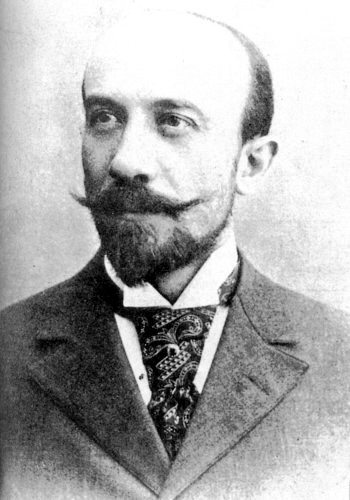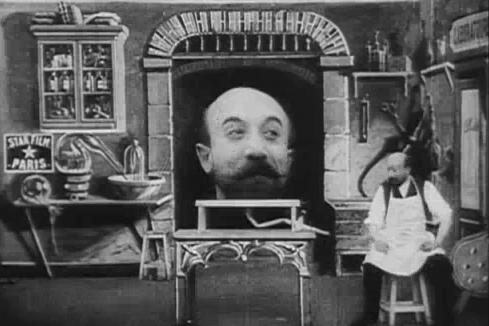I never dreamed I’d have the opportunity to see these films, all of them around 110 years old, on a theater screen being presented by Méliès’ family. Last Saturday, The Music Box Theatre and Alliance Francais paid tribute to one of the great pioneers of silent film. Recently, Martin Scorsese honored the work and influence of Méliès through the film “Hugo,” but the sad truth is that the recognition Méliès now receives follows decades of being forgotten by the public. Although his work “A Trip to the Moon” remains one of the most iconic films of the silent era, it was pirated by American studios (Thomas Edison’s studio being one of the most notable offenders), preventing Méliès from benefiting financially and enjoying the success he deserved. In the years since his death, however, film scholars and fans have come to appreciate and respect Méliès for all of his contributions to cinema, and his family is still proudly presenting his work around the world.
Beginning his film career in 1896, Méliès embarked on a journey to bring a world he knew intimately — magic — to film. He discovered early on that there were tricks films could provide that could not be duplicated on stage. Méliès became the first filmmaker to realize the advantage that stopping the camera or blocking off portions of the film could afford — tricks that Buster Keaton, among others, would later use to their fullest potential.
A great example of Méliès’ pioneering work in the realm of special effects can be seen in 1902’s “The Man with the Rubber Head.” In the film, Méliès inflates his ‘rubber’ head –bearing his own features — using forced perspective and clever editing. Clocking in at only two-and-a-half minutes, the film is short in length but nothing short of impressive.
Méliès was also a pioneer in the realm of colored film. Although Technicolor would not be introduced for another 20 years, several of Méliès’ films featured brightly colored scenes created by workers painstakingly painting clothing, flames and backgrounds, one film cell at a time. A beautiful example of this effect is preserved in “The Witch” from 1906.
In recognition of his 150th birthday, Méliès’ great-granddaughter Marie-Hélène Lehérissey-Méliès and great-great-grandson Lawrence Lehérissey-Méliès have been touring with “The Man with the Rubber Head,” “The Witch” and 14 other films spanning Méliès’ career, and presenting them to audiences around the world with live narration and piano accompaniment. For the Chicago engagement, actress Barbara Robertson provided the narration in English. The narration and musical accompaniment approximate the experience that filmgoers would have experienced in the early days of film, and this particular experience was made even more special by the excited crowd, full theater and The Music Box’s starlit ceiling.
Didn’t get a chance to see the films at The Music Box? Approximate the experience with this playlist, featuring all of the films shown at the cine-concert, from the iconic “A Trip to the Moon” to the first ever product placement in a film in “Bluebeard.” And don’t forget to check out the rest of our silent film series.
Want to dive deeper into the world of silent film? Keep up with my posts over on Curtains or on Chicago Nitrate.

